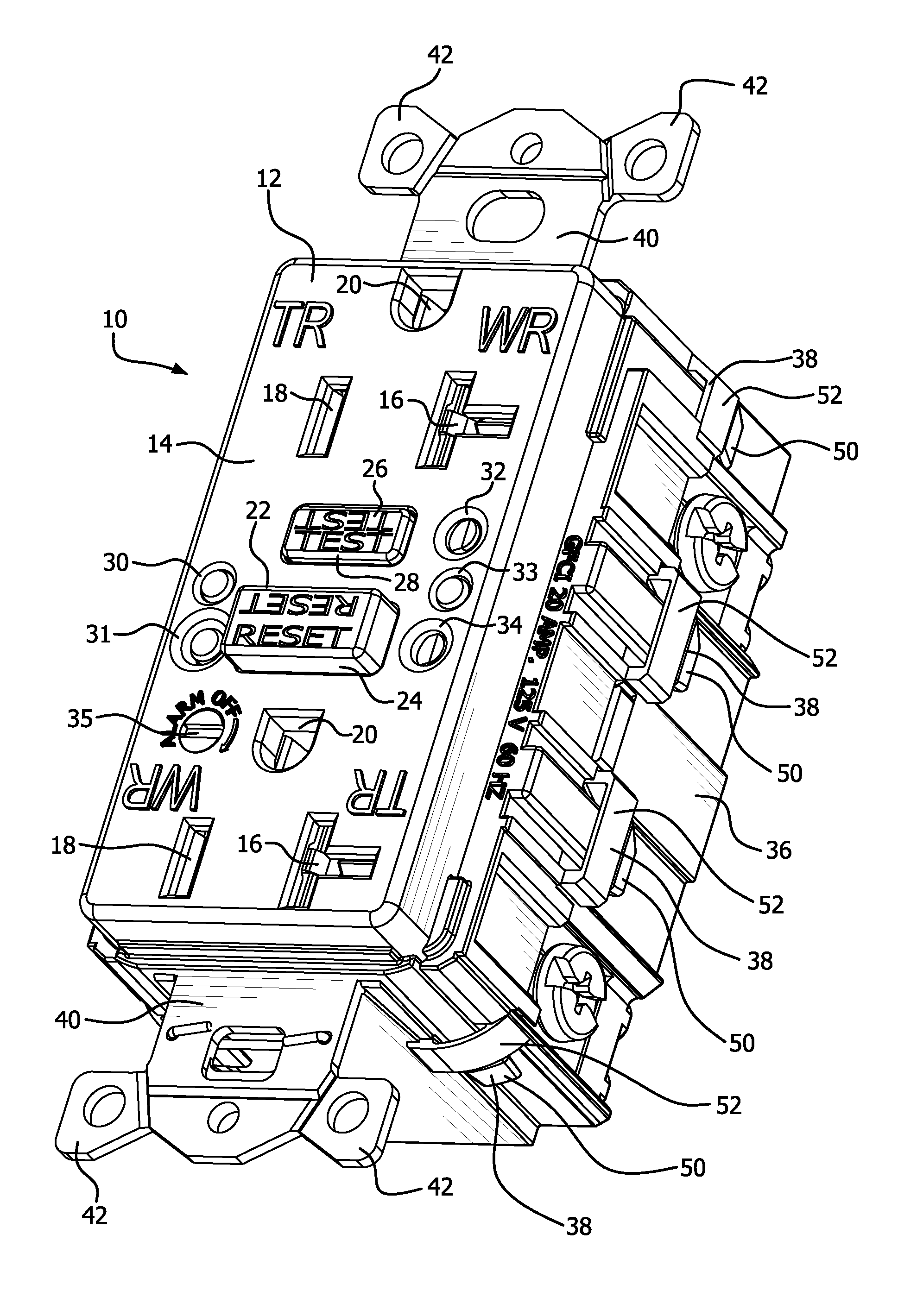Self-test gfci device with dual solenoid coil electric control
a technology of solenoid coil and electric control, which is applied in the direction of circuit-breaking switches, switches with electromagnetic release, emergency protective arrangements for limiting excess voltage/current, etc., can solve the problems of increasing the risk of potentially life-threatening injuries, one or more electronic components that drive the mechanical current interrupting device in a gfci can short-out or otherwise become defective,
- Summary
- Abstract
- Description
- Claims
- Application Information
AI Technical Summary
Benefits of technology
Problems solved by technology
Method used
Image
Examples
Embodiment Construction
[0013]In consideration of problematic issues associated with related art GFCI devices, including but not limited to the problematic issues discussed above, a circuit in accordance with one or more exemplary embodiments generally relates to an auto-monitoring circuit that continuously monitors the performance of a GFCI device. More specifically, a processing device, such as a microcontroller or microprocessor, is configured to periodically perform an auto-monitoring routine based on a stored software program for testing and verifying the viability and functionality of various sub-circuits within the GFCI device. To test proper current isolation of the GFCI device, a driver coupled to the microcontroller is operated to initiate a test signal representative of a ground fault each time the auto-monitoring routine is performed, or run, and different circuit nodes are monitored to confirm proper operation of the device.
[0014]A GFCI device in accordance with at least one embodiment uses a ...
PUM
 Login to View More
Login to View More Abstract
Description
Claims
Application Information
 Login to View More
Login to View More - R&D
- Intellectual Property
- Life Sciences
- Materials
- Tech Scout
- Unparalleled Data Quality
- Higher Quality Content
- 60% Fewer Hallucinations
Browse by: Latest US Patents, China's latest patents, Technical Efficacy Thesaurus, Application Domain, Technology Topic, Popular Technical Reports.
© 2025 PatSnap. All rights reserved.Legal|Privacy policy|Modern Slavery Act Transparency Statement|Sitemap|About US| Contact US: help@patsnap.com



